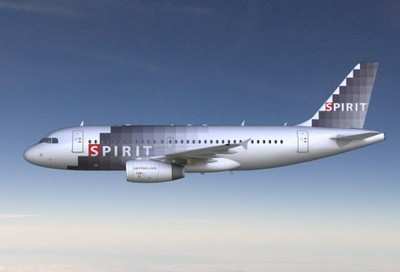Tue, May 26, 2009
But Overall Industry Jobs Are Down
Figures released today by the U.S. Department of Labor Bureau of
Transportation Statistic (BTS) show that U.S. scheduled passenger
airlines employed 2.3 percent more pilots and 5.9 percent more
maintenance workers in 2008 than in 2007 while total industry jobs
declined by 3.0 percent.

Most of the job losses were reported in the "Other"
category.
BTS, a part of the Research and Innovative Technology
Administration, reported that the seven large network carriers
employed 1.1 percent more pilots and 8.6 percent more maintenance
workers in 2008 than in 2007. The seven largest low-cost carriers
employed 1.1 percent fewer pilots and 12.5 percent fewer
maintenance workers from 2007 to 2008.
All of the low-cost carriers except Frontier Airlines added
pilots from 2007 to 2008. Spirit Airlines had the largest increase
in pilot employment followed by Allegiant Airlines. Allegiant had
the largest increase in maintenance workers of any low-cost airline
from 2007 to 2008 while Spirit had the largest reduction.

The passenger airlines had 8.9 maintenance workers per aircraft
in 2008, up from 8.3 per aircraft in 2007. The network airlines had
12.9 maintenance workers per aircraft in 2008, up from 12.3 per
aircraft in 2007. Spending by network airlines for outsourced
maintenance increased from 42.5 percent of total maintenance
spending in 2007 to 42.8 percent in 2008.
Scheduled passenger airlines include network, low-cost, regional
and other airlines. Network carriers operate a significant portion
of their flights using at least one hub where connections are made
for flights on a spoke system. Low-cost carriers are those that the
industry recognizes as operating under a low-cost business model,
with lower infrastructure and aircraft operating costs.
Data is compiled from annual reports filed with BTS by
commercial air carriers, as of May 20. There were 37 reporting
scheduled passenger carriers in 2008. Hawaiian Airlines failed to
file its report.
More News
Aero Linx: Model Aeronautical Association of Australia MAAA clubs are about fun flying, camaraderie and community. For over 75 years, the MAAA has been Australia’s largest fl>[...]
Touchdown Zone Lighting Two rows of transverse light bars located symmetrically about the runway centerline normally at 100 foot intervals. The basic system extends 3,000 feet alon>[...]
“Discovery and innovation are central to our mission at Virgin Galactic. We’re excited to build on our successful record of facilitating scientific experiments in subor>[...]
How To Get A Story On Aero-TV News/Feature Programming How do I submit a story idea or lead to Aero-TV? If you would like to submit a story idea or lead, please contact Jim Campbel>[...]
Student Pilot Reported That During Rotation, “All Of A Sudden The Back Of The Plane Kicked To The Right..." Analysis: The student pilot reported that during rotation, “>[...]
 ANN's Daily Aero-Linx (05.02.24)
ANN's Daily Aero-Linx (05.02.24) ANN's Daily Aero-Term (05.02.24): Touchdown Zone Lighting
ANN's Daily Aero-Term (05.02.24): Touchdown Zone Lighting Aero-News: Quote of the Day (05.02.24)
Aero-News: Quote of the Day (05.02.24) ANN FAQ: Contributing To Aero-TV
ANN FAQ: Contributing To Aero-TV NTSB Final Report: Cirrus Design Corp SR20
NTSB Final Report: Cirrus Design Corp SR20




